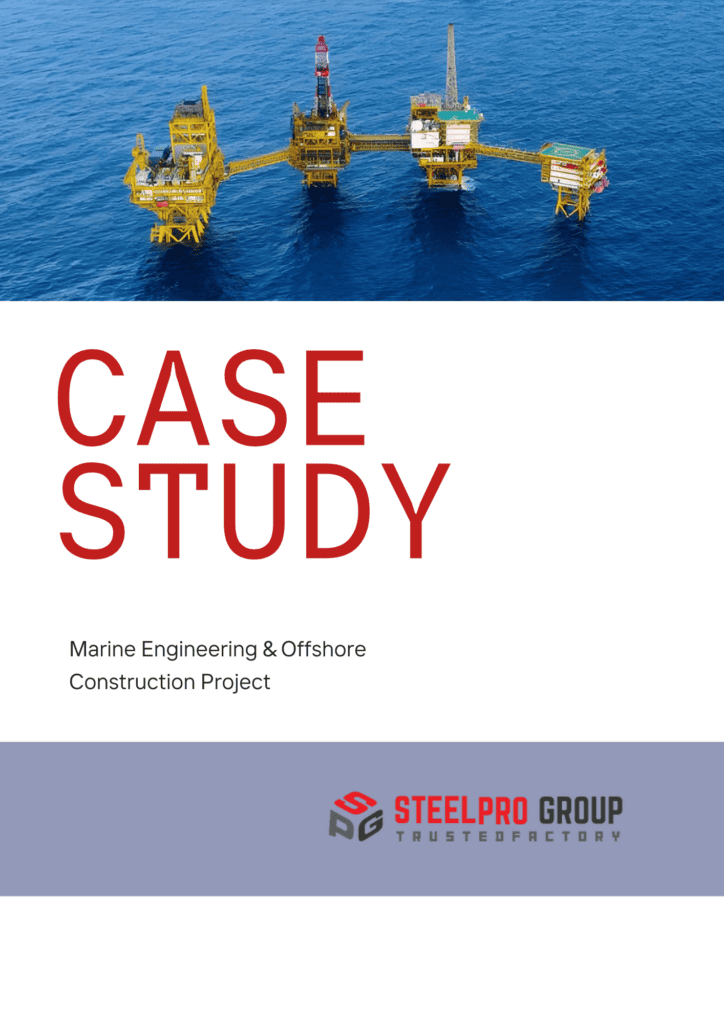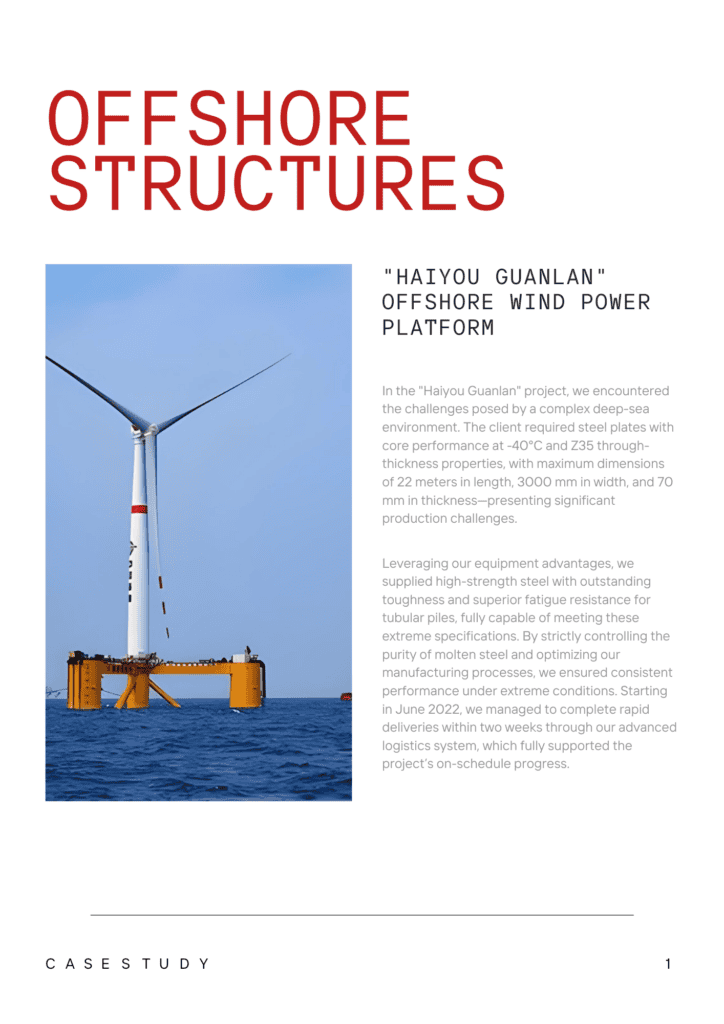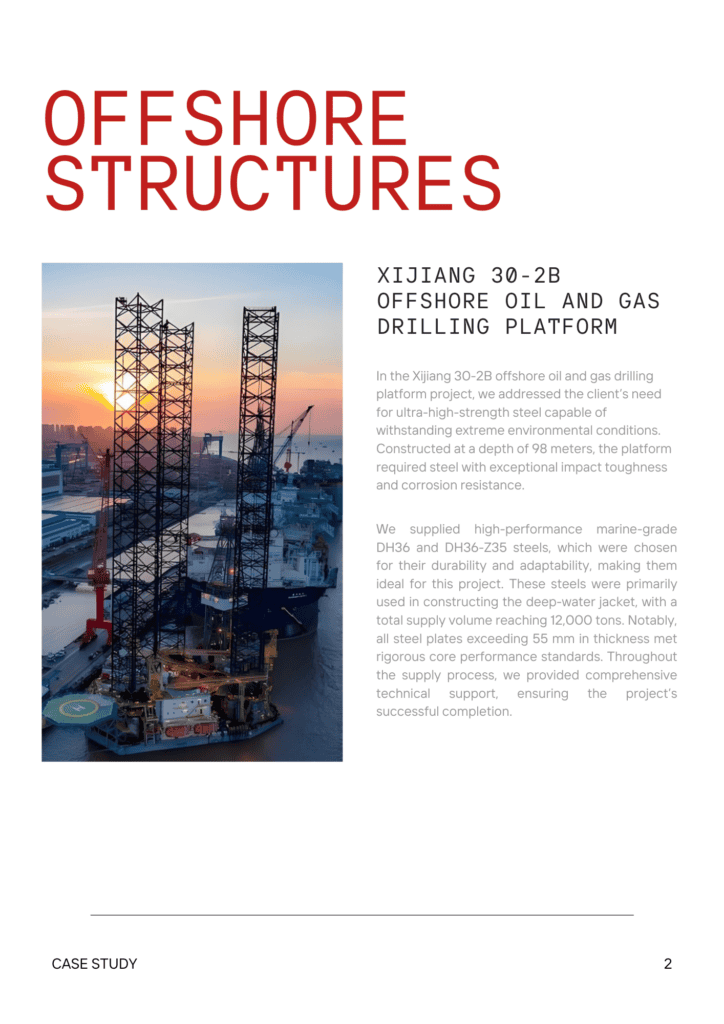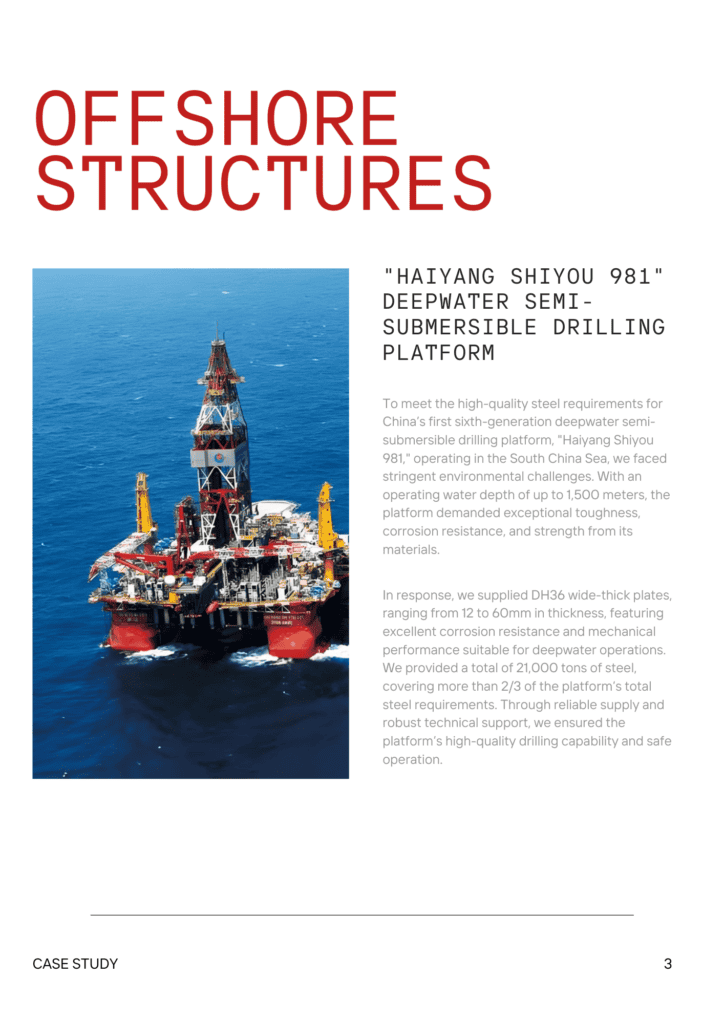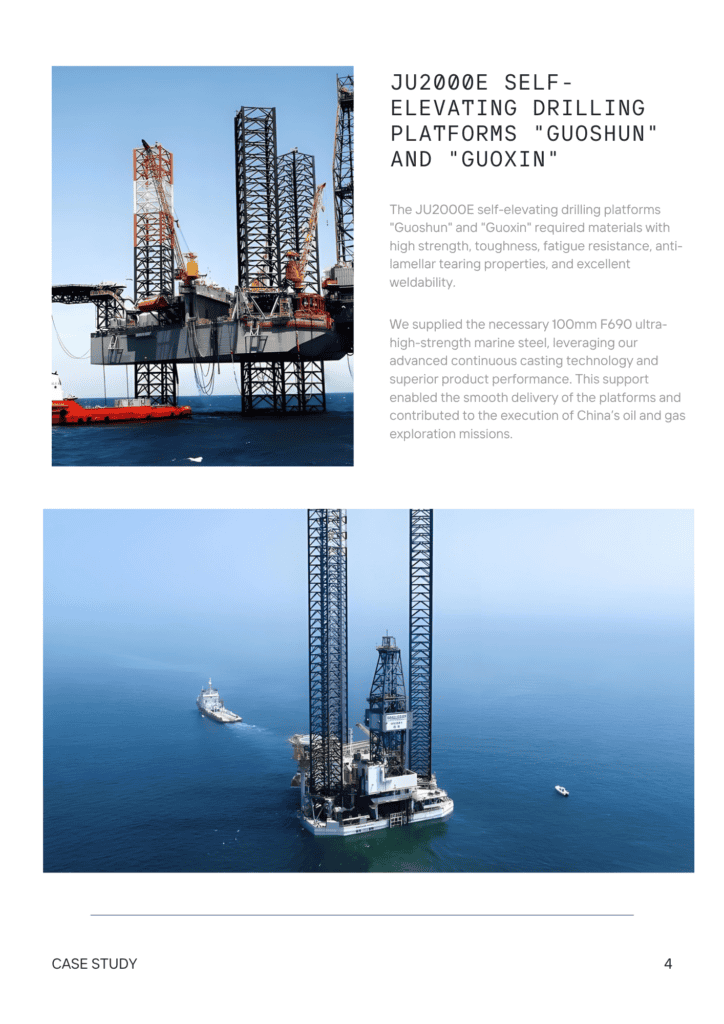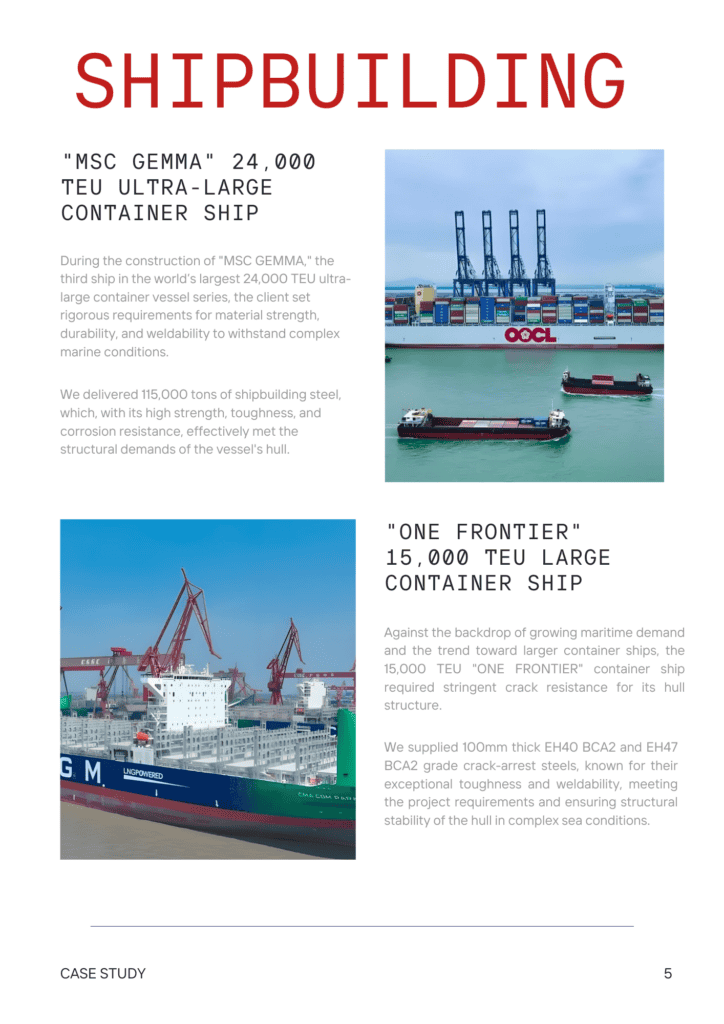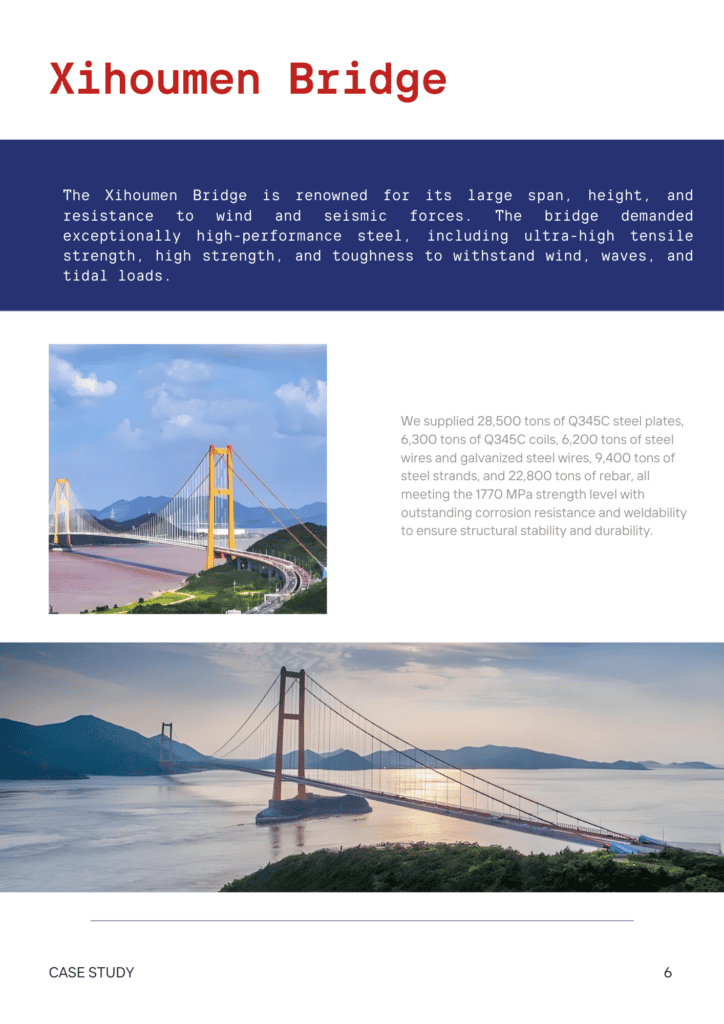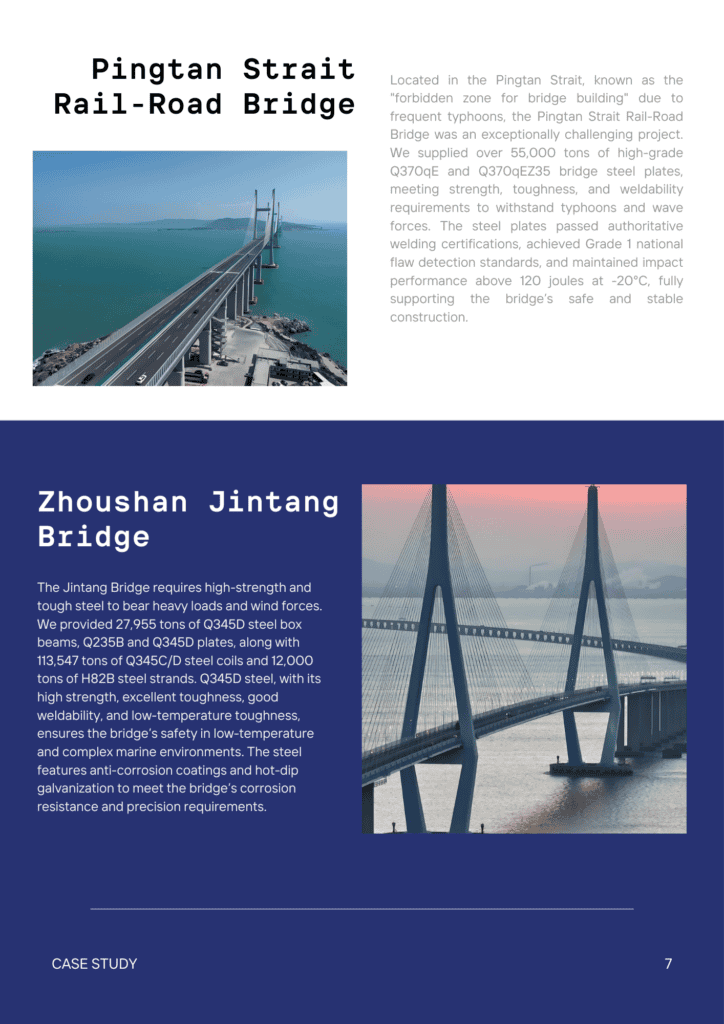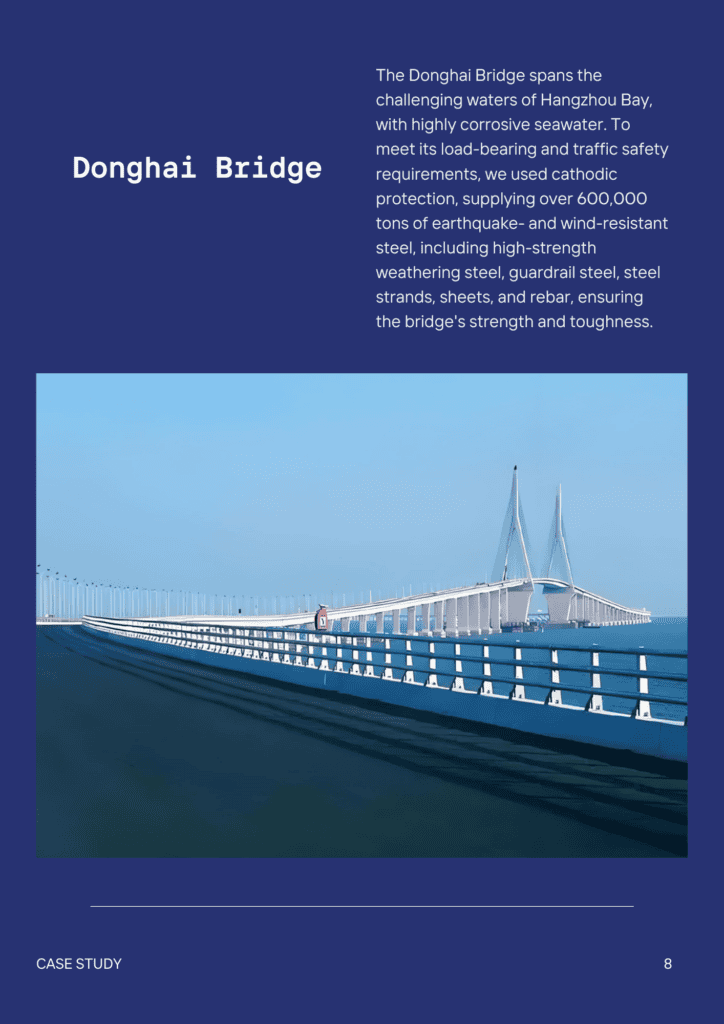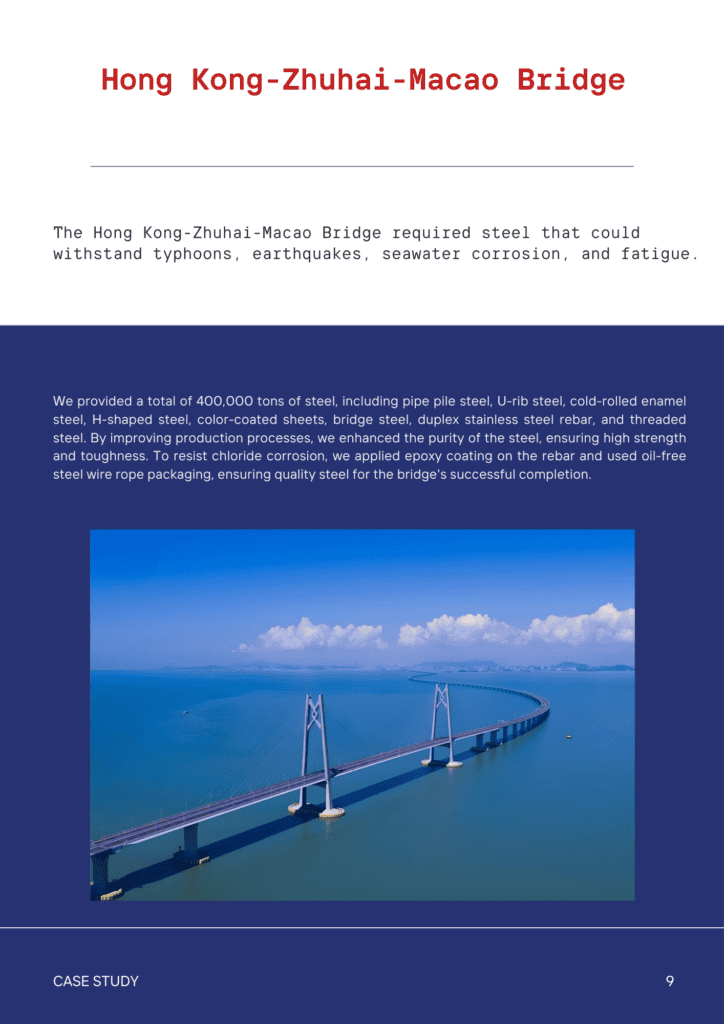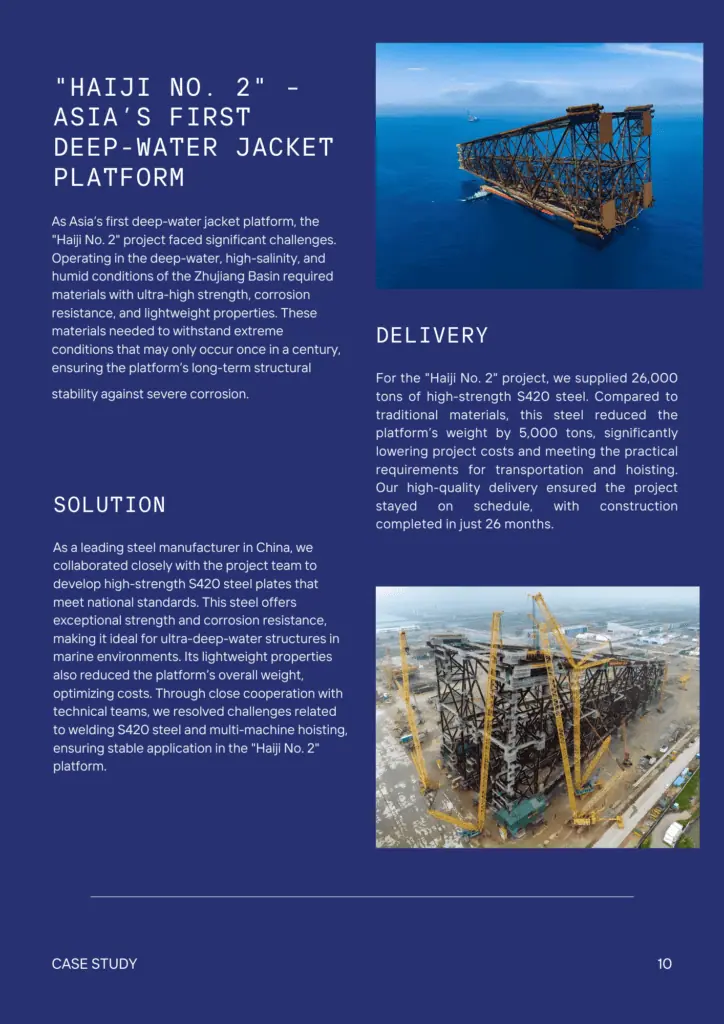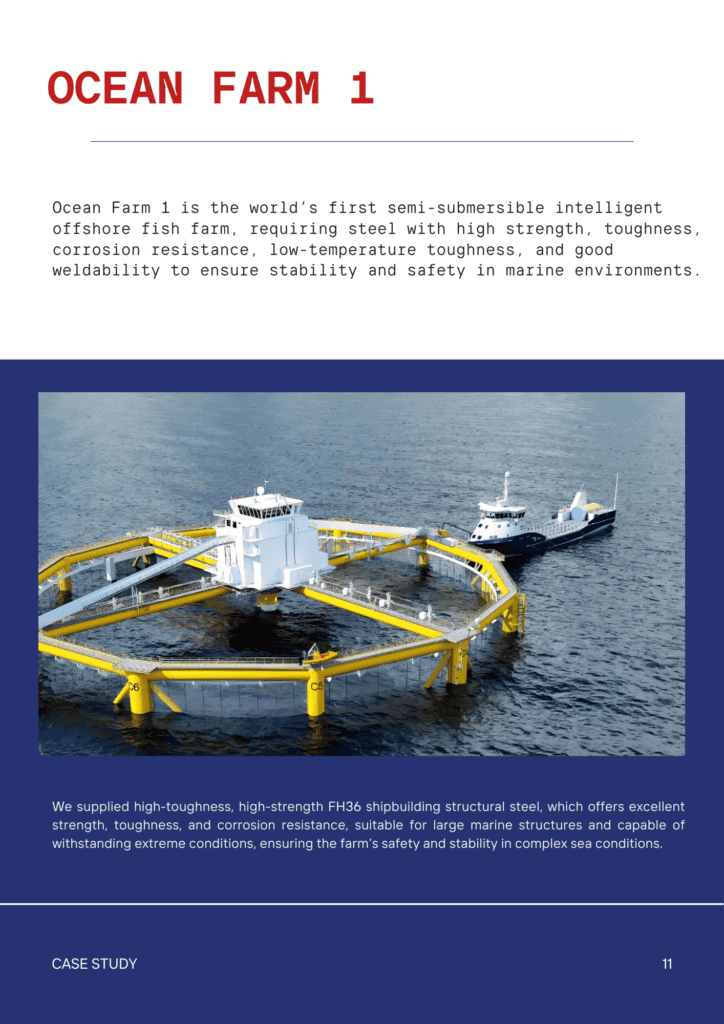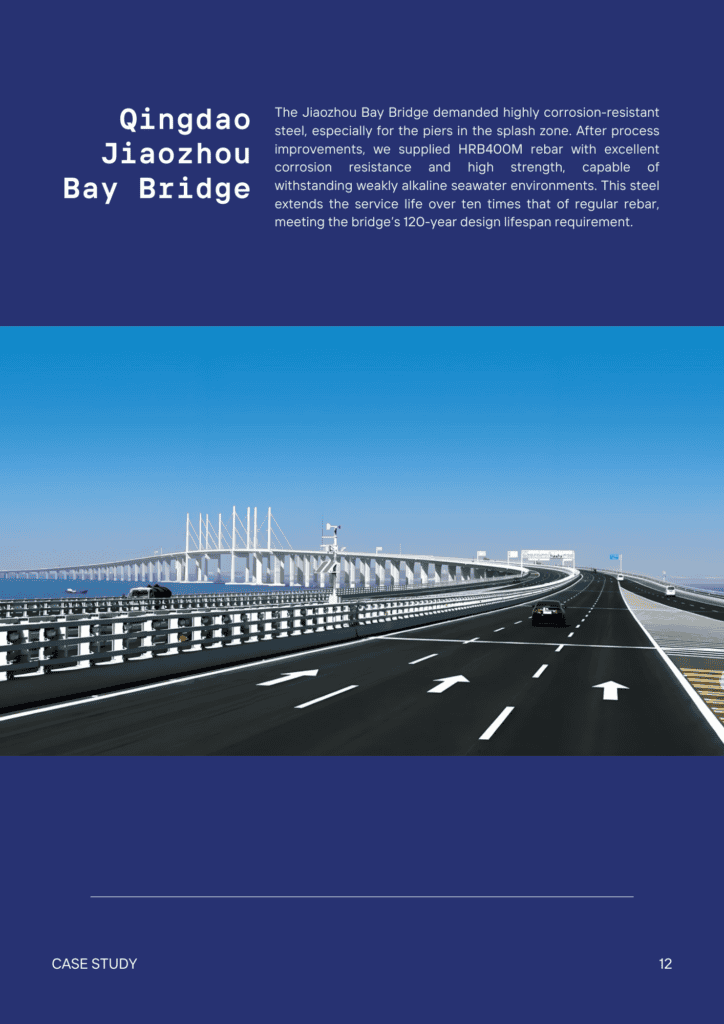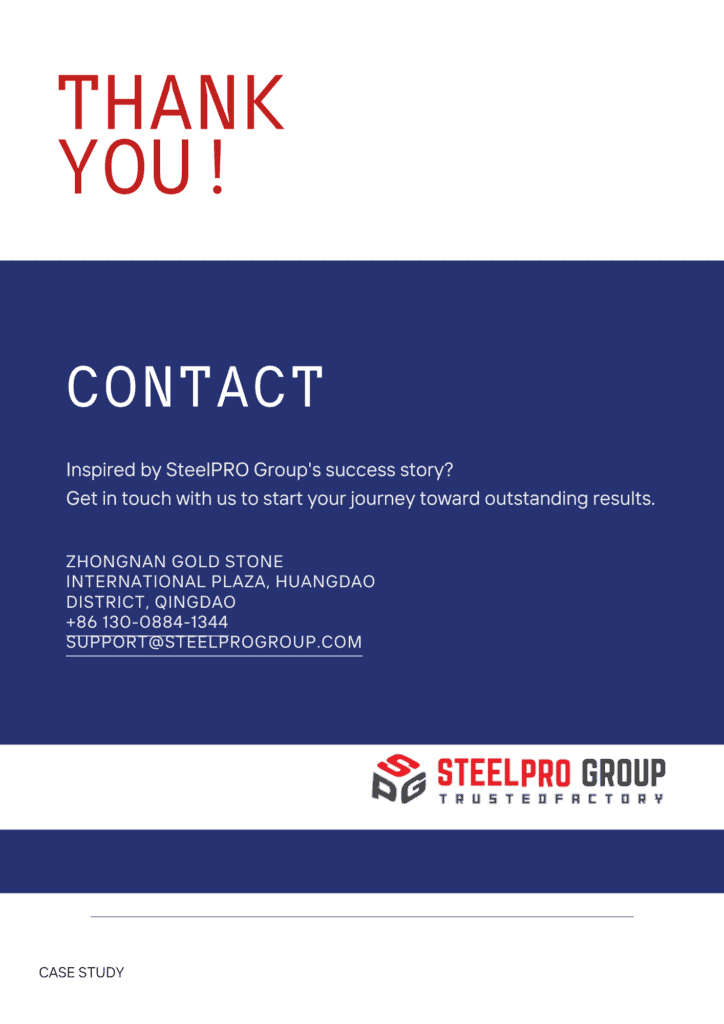Q420 STEEL | STRUCTURAL STEEL
Q420 STEEL | STRUCTURAL STEEL
Q420 steel is a high-strength, low-alloy structural steel with a minimum yield strength of 420 MPa. The “Q” stands for yield strength, and “420” indicates the minimum value. Known for its strength, toughness, and weldability, Q420 is ideal for construction, bridges, and pressure vessels. Its carbon, manganese, and silicon content further enhance its performance, making it suitable for large-span buildings and high-rise frameworks. We offer Q420NB/C/D/E products with thicknesses from 6 to 150mm according to the GB/T 1591 standard. Equivalent grades include S420 (EN), A572 Grade 65 (US), and SM570 (JIS).
Description
What is Q420?
Q420 steel is composed of approximately 97% iron and 3% alloying elements, including carbon, manganese, and silicon. It is a high-strength, low-alloy structural steel produced in solid shapes like plates and beams. Known for its high yield strength (minimum 420 MPa), excellent tensile strength, and good weldability, Q420 steel is ideal for construction structures, bridges, and pressure vessels. It is processed through hot rolling, which enhances its strength and toughness. Q420 steel can be classified into grades such as Q420B, Q420C, Q420D, and Q420E, each with specific performance characteristics.Characteristics of Q420 Steel
Q420 steel offers high strength, toughness, and good weldability, making it ideal for construction, bridges, and pressure vessels. Its alloy composition, including carbon, manganese, and silicon, enhances mechanical properties, supporting large-span and high-rise structures. For applications requiring better corrosion resistance or low-temperature performance, alternatives like Q355 or S460 are recommended. These grades offer specific advantages, such as improved weather resistance and better performance in extreme environments, complementing Q420’s strengths.Chemical Compositions
| Element | Composition (Weight %) |
|---|---|
| Carbon (C) | 0.20-0.23 |
| Silicon (Si) | 0.50-0.80 |
| Manganese (Mn) | 1.20-1.60 |
| Phosphorus (P) | ≤ 0.035 |
| Sulfur (S) | ≤ 0.035 |
| Chromium (Cr) | 0.30-0.50 |
| Nickel (Ni) | 0.30-0.50 |
| Copper (Cu) | 0.20-0.40 |
| Vanadium (V) | 0.02-0.10 |
| Titanium (Ti) | 0.02-0.10 |
Physical Properties
| Property | Metric | Imperial |
|---|---|---|
| Density | 7.85 g/cm³ | 0.284 lb/in³ |
| Melting Point | 1450-1520 °C | 2642-2768 °F |
| Boiling Point | Not specified | Not specified |
| Thermal Conductivity | 50 W/m·K | 28.9 BTU/h·ft·°F |
| Electrical Conductivity | 2.14 × 10⁶ S/m | 3.69 × 10⁶ S/m |
| Specific Heat Capacity | 0.49 J/g·K | 0.117 BTU/lb·°F |
| Thermal Expansion Coefficient | 12 x 10⁻⁶ /°C | 6.7 x 10⁻⁶ /°F |
| Electrical Resistivity | 46.8 μΩ·cm | 18.4 μΩ·in |
Mechanical Properties
| Property | Metric | Imperial |
|---|---|---|
| Tensile Strength | 520-680 MPa | 75420-98520 psi |
| Yield Strength | 420 MPa | 60920 psi |
| Brinell Hardness (HB) | 200-230 | 200-230 |
| Rockwell Hardness (HRC) | 20-24 | 20-24 |
| Vickers Hardness (HV) | 210-240 | 210-240 |
| Elongation | 18-20% | 18-20% |
| Elastic Modulus | 210 GPa | 30500 ksi |
Data After QT(Quenching and Tempering) Processing
| Property | Metric | Imperial |
|---|---|---|
| Tensile Strength | 630-780 MPa | 91,385-113,045 psi |
| Yield Strength | 520-680 MPa | 75,420-98,600 psi |
| Impact Toughness | ≥ 34 J | ≥ 25 ft-lb |
| Elongation | ≥ 16% | ≥ 16% |
| Reduction of Area | ≥ 45% | ≥ 45% |
| Elastic Modulus | 210 GPa | 30,500 ksi |
Industries & Applications
| Industry | Products |
|---|---|
| Large Ships | Hulls, Decks, Bulkheads, Ship Frames |
| Bridges | Bridge Girders, Support Beams, Bridge Decks, Suspension Cables |
| Power Station Equipment | Turbine Components, Boiler Parts, Heat Exchangers, Pressure Vessels |
| Medium and High-Pressure Boilers | Boiler Drums, Steam Pipes, Pressure Tubes, Heat Recovery Systems |
| High-Pressure Vessels | Storage Tanks, Chemical Reactors, Gas Cylinders, Heat Exchangers |
| Lifting Machinery | Crane Booms, Hoist Frames, Winch Drums, Lifting Hooks |
| Mining Machinery | Excavator Arms, Mining Truck Frames, Drill Rigs, Conveyor Belt Supports |
| Large Welded Structural Parts | Structural Beams, Columns, Trusses, Frameworks |
Machining
Q420 Heat Treating Instructions
- Heating (Austenitizing):
- Heat the steel to a temperature range of 900-950°C (1652-1742°F).
- Maintain this temperature to ensure complete austenitization.
- Quenching:
- Rapidly cool the steel in water or oil.
- This process transforms the microstructure into martensite, increasing hardness and strength.
- Tempering:
- Reheat the steel to a temperature range of 550-650°C (1022-1202°F).
- Maintain this temperature for a sufficient time to achieve the desired mechanical properties.
- The tempering process reduces brittleness while maintaining high strength and hardness.
Q420 Surface Finish Processing Methods
- Galvanization: Adds zinc coating for corrosion resistance.
- Powder Coating: Enhances durability with customizable colors.
- Shot Peening: Improves fatigue strength by introducing compressive stress.
- Electroplating: Provides a protective metal layer to resist wear and corrosion.
- Pickling and Passivation: Cleans and protects the surface from rust.
- Polishing: Creates a smooth, reflective finish for aesthetic purposes.
Our Service
SteelPRO Group – manufacturer and solution provider for special steel, offering multi-industry application solutions and customised services, 100% quality free, accompanying customers in their growth!
Our Quality Control
- Roundness
- Tolerance
- Microstructure
- Non-Destructive Testing
- Destructive Testing
- Process Control
Service Integration Processing
- Welding
- Metal Fabrication
- CNC Machining
- Lathe
- Forming
QUESTION 1
QUESTION 2
QUESTION 3
QUESTION 4
QUESTION 4
CONTACT
CONTACT
Certifications







Other Products
-
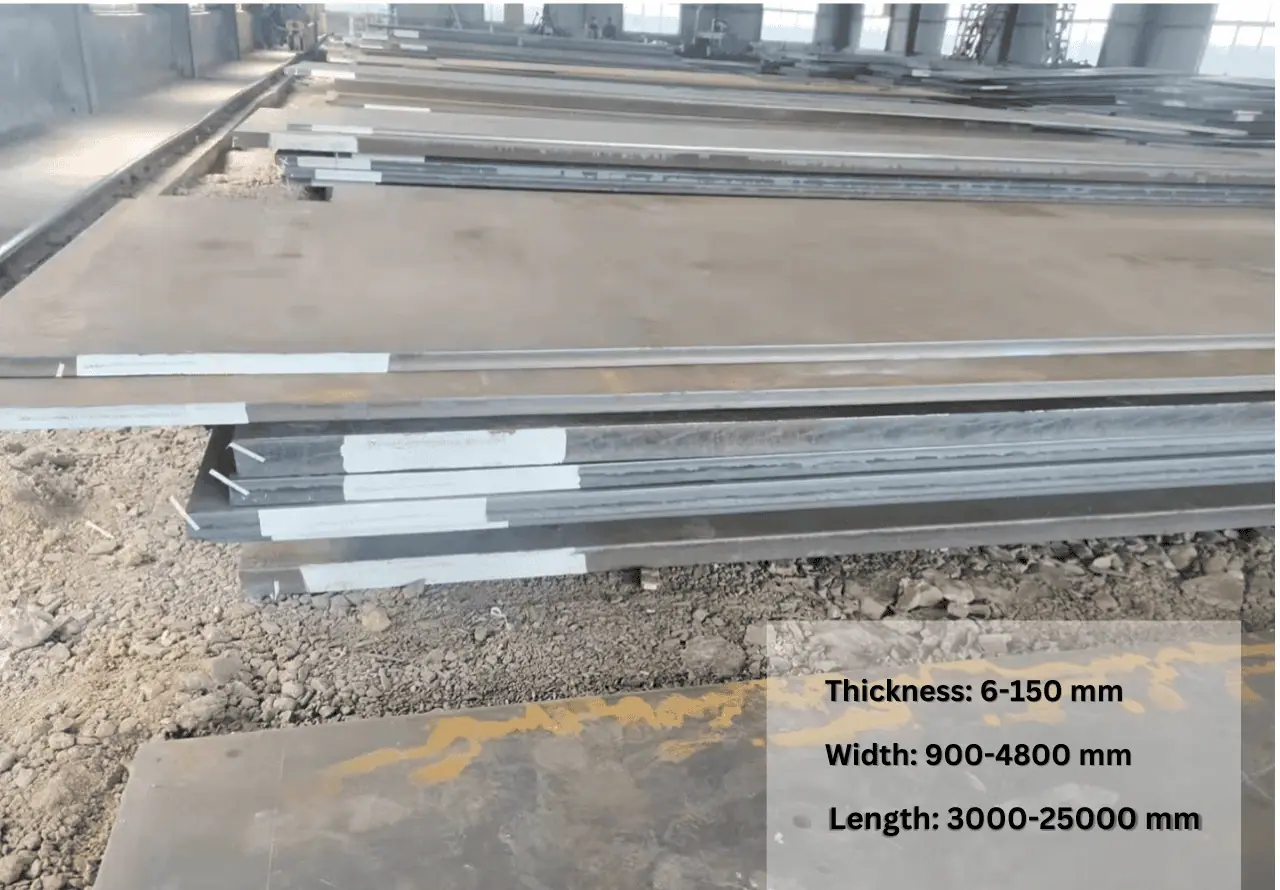
-
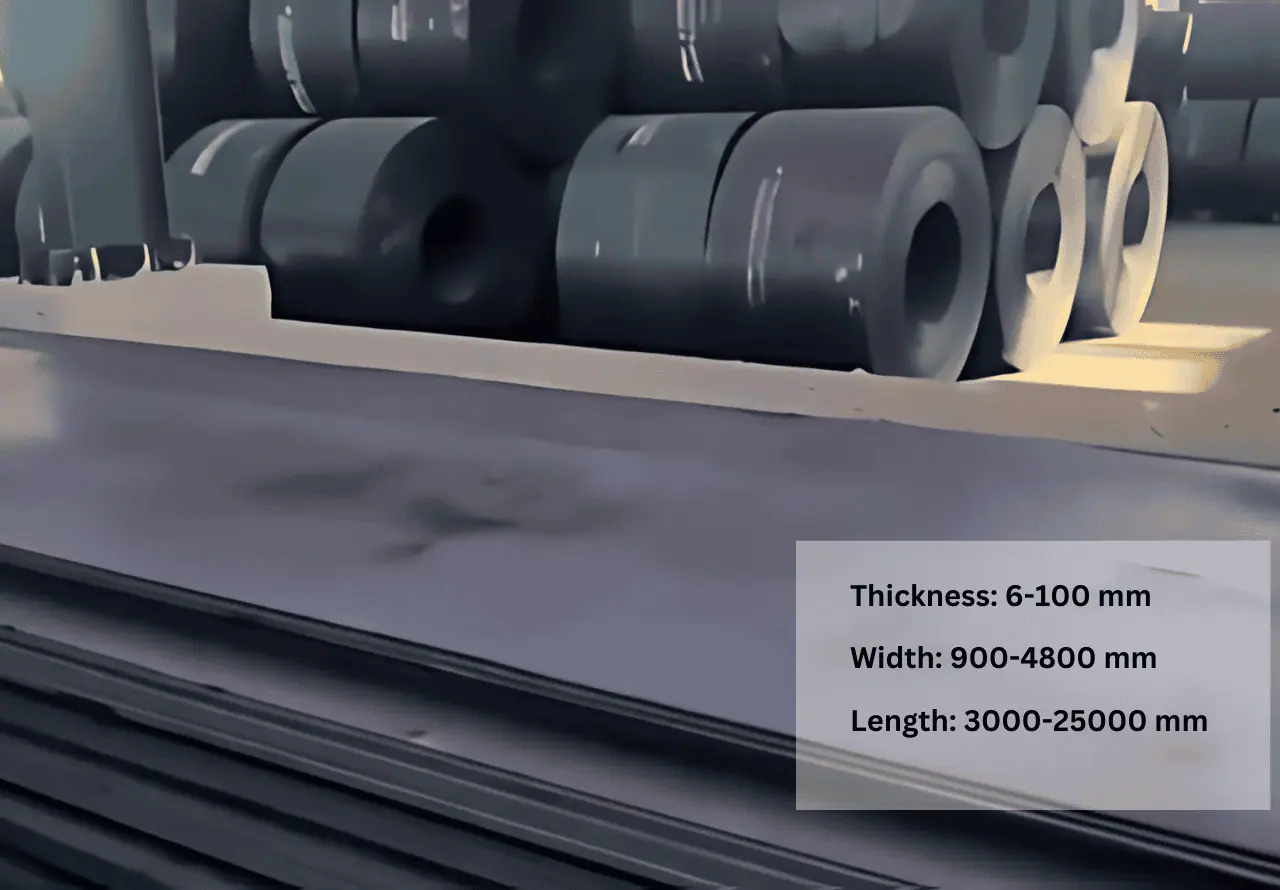
SteelPRO Group offers FH550 high-strength structural steel plates for shipbuilding....
-
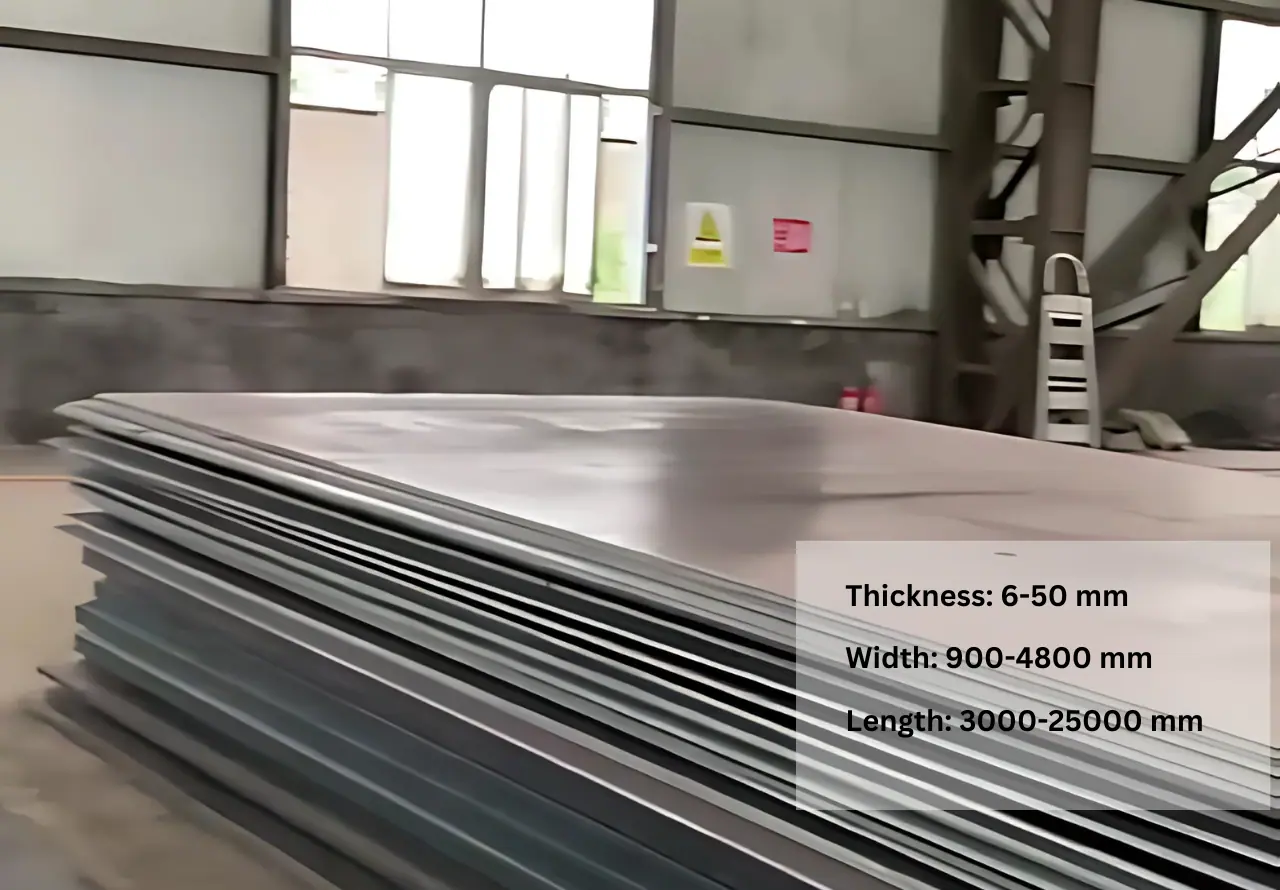
SteelPRO Group offers DH550 high-strength shipbuilding steel plates in stock....
-
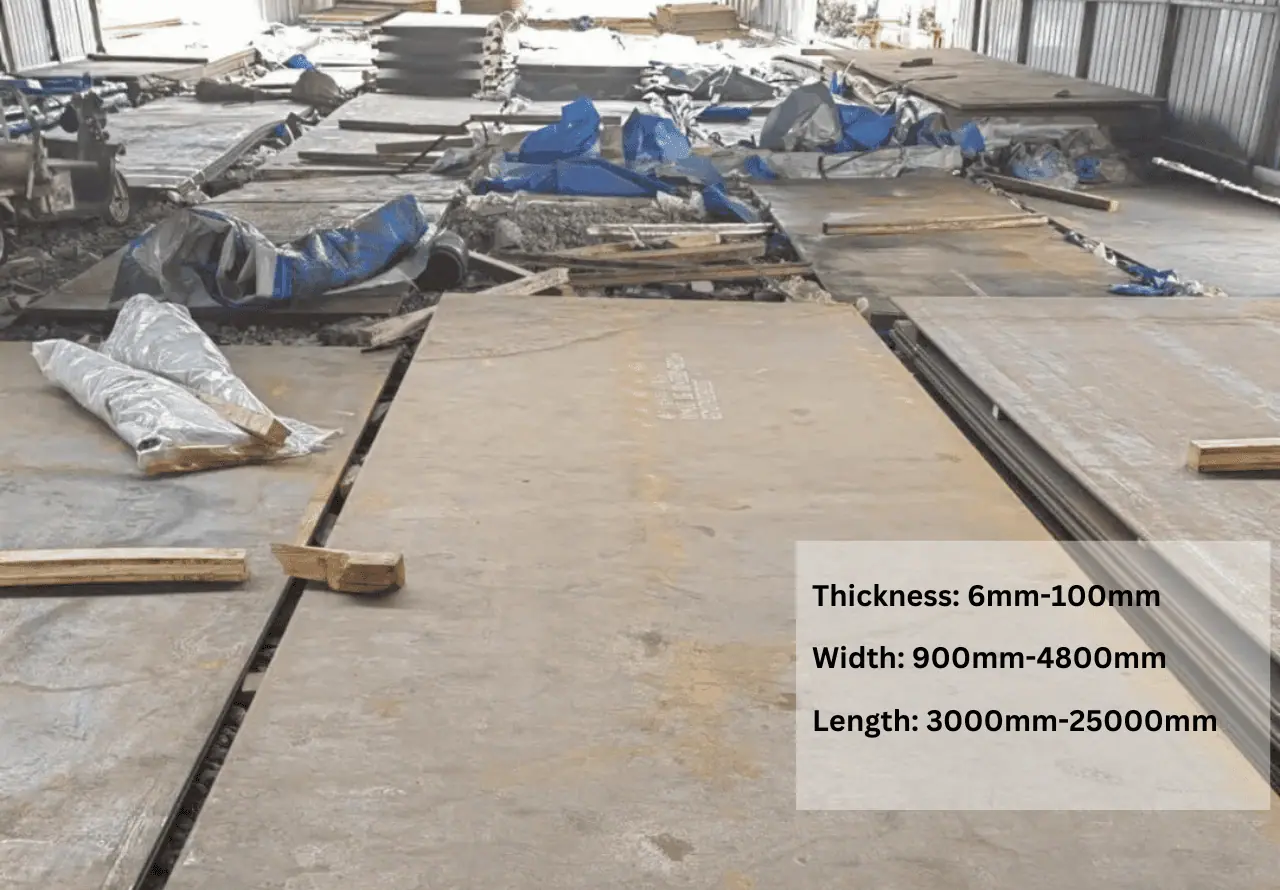
SteelPro Group offers FH36 high-strength steel for shipbuilding. It has...




